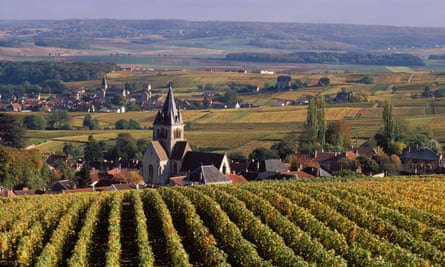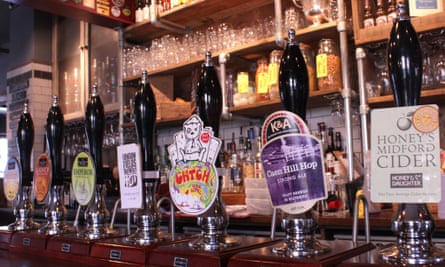Out of this year’s bumper crop of drinks books, it’s good to see one that gets to the point of why we drink. From A Short History of Drunkenness (Viking) I learned how alcohol affects different people and cultures in very different ways. Lou Reed had it right in “The Power of Positive Drinking” when he sang: “Some people drink to unleash their libidos / And other people drink to prop up their egos.” The ancient Egyptians were into binge drinking, vomiting and then having an orgy all in a bid to get closer to the gods, or so they claimed. With a great eye for a story and a counterintuitive argument, Mark Forsyth has enormous fun breezing through 10,000 years of alcoholic history in a little more than 250 pages.
Less drunken but almost as extensive is Rod Phillips’s 9,000 Years of Wine: A World History (Whitecap). It’s impeccably researched: if you want to know the impact of the French Revolution on wine, this is the place to start. The statistics in particular are wonderful, such as a hospital in Darmstadt, Germany, that got through 4,633 bottles of white, 6,332 bottles of red, 60 bottles of champagne and 30 dozen bottles of port in one year, 1870. That’s where I want to convalesce.
This year archaeologists found evidence that people were making wine 8,000 years ago in Georgia. Remarkably, not much has changed since then, the Georgians still make wine in clay and jars. As a result of its unique food and culture, the country has become a place of pilgrimage for wine lovers as well as a perennial travel supplement favourite. With their deadpan humour, Miquel Hudin and Daria Kholodilina have produced the definitive guide to this unique country’s wines. Hopefully Georgia: A Guide to the Cradle of Wine (Vinologue) will lead to more Georgian wines on our shelves to match all those colour supplement articles.

This year I have referred to Victoria Moore’s Wine Dine Dictionary (Granta) probably more than any other wine book. The concept is simple: a bilingual dictionary for food and wine. If you’re stuck in a rut drinking the same old wines then this is the book for you. It’s also worth dipping into for pure pleasure because Moore has such a gift for putting flavours into words.
Bursting Bubbles: A Secret History of Champagne (Quiller) by Robert Walters is the most provocative wine book I’ve read in a while. According to Walters, most champagne is a con: yields are enormous, grapes are harvested underripe and until 1998 the vineyards were fertilised with rubbish from Paris. The big houses buy grapes or even ready-made wine from all over the region without much regard to quality. Poor materials are then covered up in the cellar with sugar and yeast. As well as busting myths about champagne, Walters profiles growers who are trying to do something different. There is much that I disagreed with but overall the effect was as invigorating as a glass of champagne – from a small producer, naturally.
Part of the success of champagne is down to clever marketing so it was fascinating to read “That S*it Will Never Sell!” (Prideaux) by David Gluckman, who worked in product development for IDV, the forerunner of booze producer Diageo. He’s the man behind Le Piat d’Or and Baileys Irish Cream, but the book is worth reading more for the drinks that didn’t make it: red chardonnay, ice whisky or Guinness Light, anyone? To my surprise, Gluckman comes across as uncynical, genuinely believing in the quality of his products and disparaging about using market research to design drinks.
In the last 10 years whisky from Japan has gone from under-the-radar to so in demand that it’s impossible to get hold of it. Dave Broom’s The Way of Whisky: A Journey around Japanese Whisky (Mitchell Beazley) ponders what it is that makes it unique. Whereas in the 1970s and 80s Scotch whisky became increasingly homogenised, the Japanese made use of different yeast strains, wooden washbacks and low-yielding barleys, and then improved on these old techniques. But it is also a precarious industry that is only now recovering from the bust in the 90s when many distilleries closed down. Gorgeously produced with photos by Kohei Take, reverent and thoughtful, The Way of Whisky suggests that the Japanese might be preserving Scotch traditions better than the Scots.

Another book that’s not uncritical of the Scotch industry is Whiskies Galore: A Tour Around Scotland’s Island Distilleries (Birlinn). For most writers a leisurely journey around Scotland’s most romantic distilleries would be an excuse to wax lyrical. Ian Buxton, however, perhaps because he used to work in marketing for Glenmorangie among others, has a strong nose for bullshit. He can be very funny and you will also learn far more in this offbeat odyssey than in a hundred more straightforward whisky books.
Pete Brown’s latest volume breaks beer down into its constituent parts: barley, water, yeast and hops. It’s a book full of amazing facts, my favourite being that Stella Artois’ fearsome reputation might be because it is no longer aged properly and therefore contains unwanted alcohols that give a worse hangover. Miracle Brew (Unbound) combines history, a look at today’s vibrant beer world and some very well-explained science about how the four magic ingredients come together to create the world’s most popular drink.
Finally, there’s Jessica Boak and Ray Bailey’s 20th Century Pub (Safe Haven). This thoroughly researched, elegantly written history of the English boozer takes in council estate pubs, road houses, gastropubs and the dreaded theme pub. I was amused to learn that in the 1970s specialist pubs with a huge list of beers on a chalkboard were frequented by bearded trendies. There were even articles complaining that such places were much too expensive for the working man. The other thing that doesn’t change is that the poor old pub seems always to have been in a permanent state of crisis. So do some positive drinking next year, have a few at your local or it will disappear. Just try not to behave like an ancient Egyptian.

Comments (…)
Sign in or create your Guardian account to join the discussion